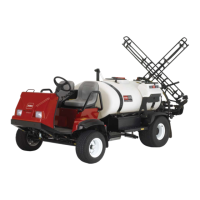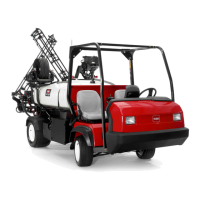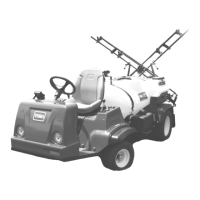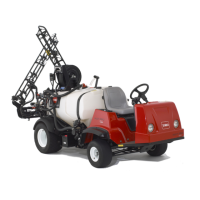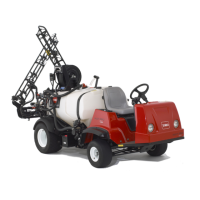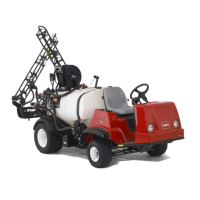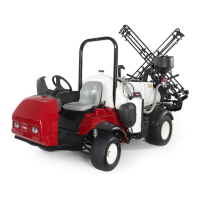Multi Pro 5800Page 10 − 2Ultra Sonic Boom Kit (Optional)
General Information
Installation Instructions
The Ultra Sonic Boom Kit Installation Instructions pro-
vides information regarding the installation, operation
and general maintenance for your Ultra Sonic Boom
System. Refer to that publication for additional informa-
tion when servicing the machine.
Parts Catalog
A separate Parts Catalog is available for the Ultra Sonic
Boom Kit. The Parts catalog can provide disassembly
and assembly information for the Ultra Sonic Boom Kit.
Refer to the parts catalog for additional information
when servicing the Ultra Sonic Boom Kit.
System Configuration
The Ultra Sonic Boom Kit is an automatic boom leveling
accessory for the Multi Pro 5800 that dynamically con-
trols the flow of hydraulic fluid to the boom hydraulic lift
cylinders to maintain the booms at a constant height
above the ground.
Two (2) ultrasonic sensors are mounted on the right and
left booms between the two outermost spray nozzles.
The sensors emit a signal that is reflected off of the
ground, received again by the sensor and processed by
a separate Toro Electronic Controller (TEC) supplied
with the kit. The controller regulates hydraulic propor-
tional valves which control fluid flow to the boom hy-
draulic lift cylinders. The operation of inputs to the TEC
as well as outputs from the TEC can be monitored via a
separate CAN−bus network not connected to the ma-
chine CAN−bus network. The diagnostic connector for
the ultra sonic boom Can−bus network is located just be-
low the ultra sonic boom TEC behind the operator con-
trol console (Fig. 1). Contact an Authorized Toro
Distributor for ultra sonic boom TEC diagnostic and re-
programming assistance.
There is a 3−position switch on the Operator control
console that allows the operator to select from three dif-
ferent operating modes: automatic system off, automat-
ic system on and a third position to allow the operator to
operate the booms in manual mode.
1. Operator control console 2. Toro Electronic
Controller (TEC)
Figure 1
2
1

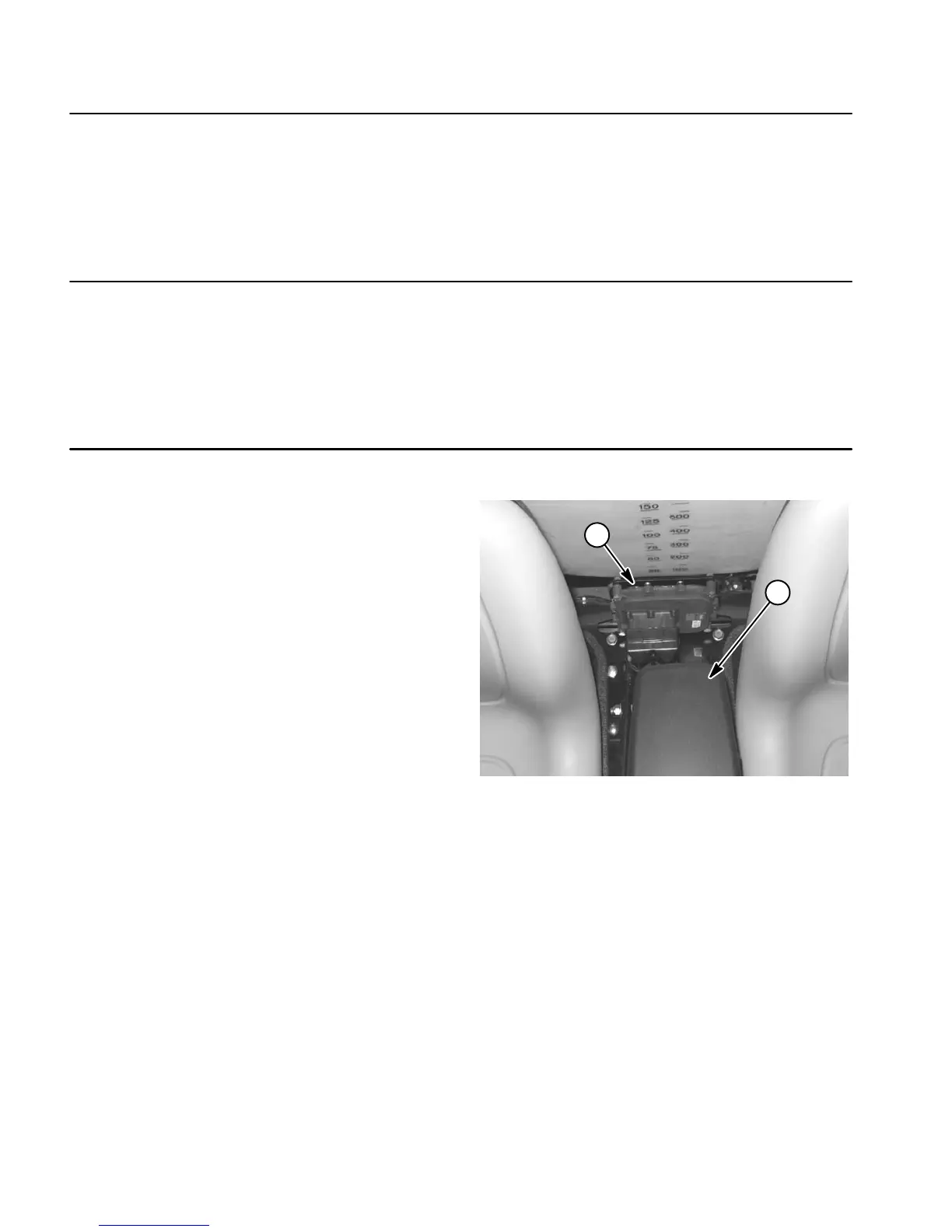